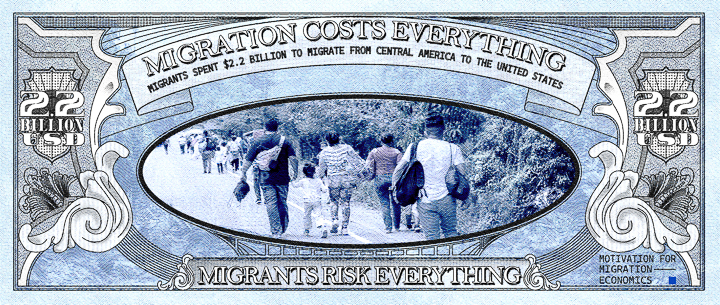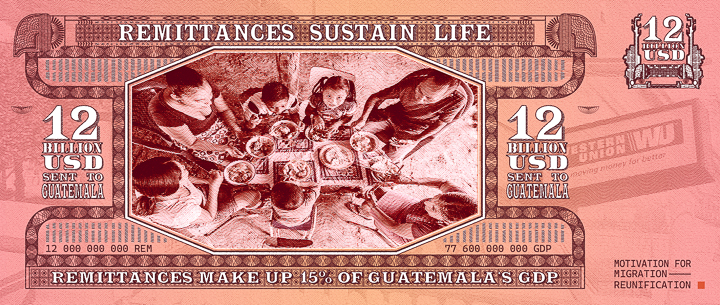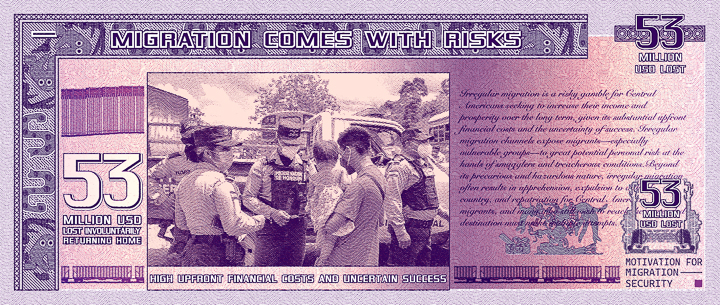
Migration is full of DISTANCES UNKNOWN — how far, costly, mentally, and physically straining the journey will be for migrants, as they separate from their home, their country, and the family they love. Migrants take on many risks and opportunities, yet it is clear that: migration is not a choice, food insecurity drives migration, migration costs are high, and migration creates benefits for both countries of origin and the places they find new homes.
DISTANCE UNKNOWN visualizes migrants' conditions using two unique datasets collected by the United Nations World Food Programme from 5,000 households in Central America and over 2,100 migrants making their journey between the Darien Gap in Columbia to the border of Mexico. An interactive map follows migrants’ journeys across the Americas and the barriers they face along the way. The motivations of the Central American migrants are woven into a tapestry of “migrant money,” with each bill highlighting insights found in the data.
DISTANCE UNKNOWN visualizes migrants' conditions using two unique datasets collected by the United Nations World Food Programme from 5,000 households in Central America and over 2,100 migrants making their journey between the Darien Gap in Columbia to the border of Mexico. An interactive map follows migrants’ journeys across the Americas and the barriers they face along the way. The motivations of the Central American migrants are woven into a tapestry of “migrant money,” with each bill highlighting insights found in the data.

WHY
For many migrants, the path ahead is not a choice, but a difficult decision of necessity. Each color symbolizes migrants’ reasons for migrating. Primarily driven by economic motivations (80%, blue), migrants seek to support their family's basic needs by sending remittances, which are primarily spent on food and shelter. Some migrants also feel pressure to emigrate because of security concerns (purple), the effects of climatic shocks (green), quality of life (yellow), and reunification with family members (orange) who have already migrated.
The money within the tapestry represents that migration comes at high costs. In 2021, Central American migrants collectively spent USD 2.2 billion to migrate to the United States. Raising funds through loans mostly from relatives and friends, the figures amassed by migrants are comparable with government spending on primary education. For example, Guatemalan migrants spent USD 1.2 billion to migrate, while their government spent USD 1.3 billion on primary education.

WHO
This motivational tapestry represents the root causes of migration from 1,624 Central American migrants from El Salvador, Guatemala, and Honduras, taken from a United Nations World Food Programme (WFP) survey in 2021. With the help of Casa Tochan, thirteen Latin American migrants crafted this physical data visualization of “migrant money,” illustrating their hopes, dreams, and risks along the way. The weaving pattern is inspired by techniques used by Venezuelans to transform inflated Venezuelan Bolivar banknotes into handbags or wallets.














